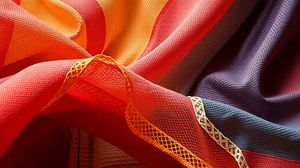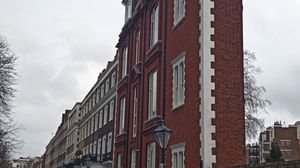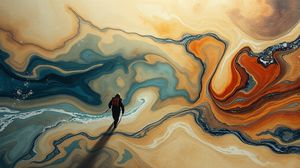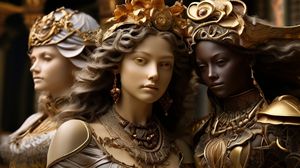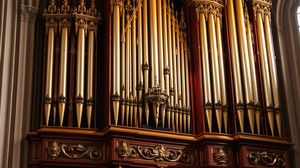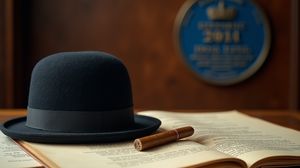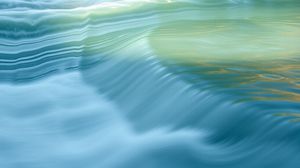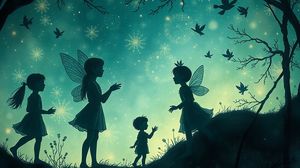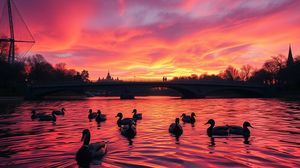
The Natural History Museum in South Kensington is one of London's most iconic and beloved institutions, renowned for its stunning architecture and rich collections. Opened in 1881, the museum is housed in a magnificent Romanesque building designed by Alfred Waterhouse, featuring a dramatic façade that makes it a landmark in its own right.
One of the museum's most famous and beloved exhibits was "Dippy", the 26-meter-long replica skeleton of a Diplodocus dinosaur, which graced the entrance hall for more than 100 years. As of a recent refurbishment, Dippy has embarked on a nationwide tour, but its legend remains an integral part of the museum's story, with a stunning suspended blue whale skeleton, affectionately named "Hope", now taking center stage.
The museum hosts a vast array of specimens and artifacts, numbering over 80 million. These collections span a staggering 4.5 billion years of Earth's history, including segments of outer space since it houses meteorite specimens that have voyaged to Earth from beyond.
This museum isn't just about static displays; it also delves into cutting-edge research in areas such as biodiversity, climate change, and the impact of humans on the natural world. It's a home of discovery where scientists work on critical issues, often using the very specimens on display or housed in their vast archives.
Visitors are often captivated by the museum's ornate Central Hall, also known as the Hintze Hall, which is a marvel of Victorian architecture, featuring intricate terracotta reliefs and a grand staircase, famously home to much more than just scientific history.
An intriguing feature within the museum is its Darwin Centre, home to numerous preserved specimens and interactive spaces where visitors can view the work of modern-day scientists. This area highlights the remarkable continuity of scientific discovery over the centuries, foregrounding the museum's dual function as a site of education and research.
The Natural History Museum offers a unique Night at the Museum experience where guests can enjoy the museum's exhibitions once the crowds have thinned, providing a magical opportunity to explore its galleries after dark.
Throughout its halls, you can encounter everything from the smallest insects to great wonders like the enormous blue whale skeleton. These exhibits are complemented by engaging displays on the evolution of species, geological specimens, fossils, and historical human artifacts, ensuring that there is something for everyone to learn and marvel at.

Making the Most of Your Visit:
One of the coolest parts of the Natural History Museum is the Darwin Centre's Cocoon, which is perfect if you're into the behind-the-scenes stuff. You can see scientists at work and occasionally catch a glimpse of them handling items from the museum's vast collections. It gives a real insight into the ongoing research, and there are interactive displays that delve into topics like climate change and biodiversity.
Don't miss the opportunity to explore the Wildlife Garden, especially if you're visiting in spring or summer. It's a bit of a hidden gem because it's tucked away outside, but it's a lovely spot to catch a breather from the busy galleries. The garden showcases native plant species and provides a real habitat for local wildlife, so keep your eyes peeled for a surprising variety of small creatures.
To get the full impact of the Hintze Hall, stand at the top of the grand staircase and take in the architectural details. From the intricately carved animals in the terracotta tiles to the grandeur of the ascending staircase itself, it's a fantastic photo opportunity and truly shows off the Victorian design genius of Alfred Waterhouse.
If you're a fan of dinosaurs, head straight to the Earth Hall and check out the dinosaur gallery. While Dippy the Diplodocus is currently out on tour, the museum has one of the most comprehensive collections of dinosaur fossils, including a roaring animatronic T-Rex that's a favorite with kids and adults alike.
Lastly, for a unique experience, time your visit to coincide with one of the museum's late openings. Known as 'Lates', these evenings transform the museum into a lively space with themed events, talks, and even bar service. It's a great way to see the museum from a different perspective, and the atmosphere is more relaxed when the daytime crowds have thinned.

Visiting Times & Costs:
The Natural History Museum in South Kensington is open to the public daily, offering a wealth of educational and interactive experiences for visitors of all ages.
Opening Hours:
- Monday to Sunday: 10:00 AM - 5:50 PM
- Closed on December 24th, 25th, and 26th
Admission:
General admission to the Natural History Museum is free of charge. However, some temporary exhibitions and special events may require a separate entrance fee. Always check in advance for ticketed events.
Accessibility:
- The museum is committed to accessibility and offers a range of services to assist visitors with disabilities.
- There are accessible entrances, and most galleries are accessible via lifts.
- Wheelchairs are available for loan, and assistance dogs are welcome.
- Induction loops are available at information desks and in certain areas.
- For more detailed assistance, visitors may inquire at the museum's information points.

Address & Map:

Nearby:




